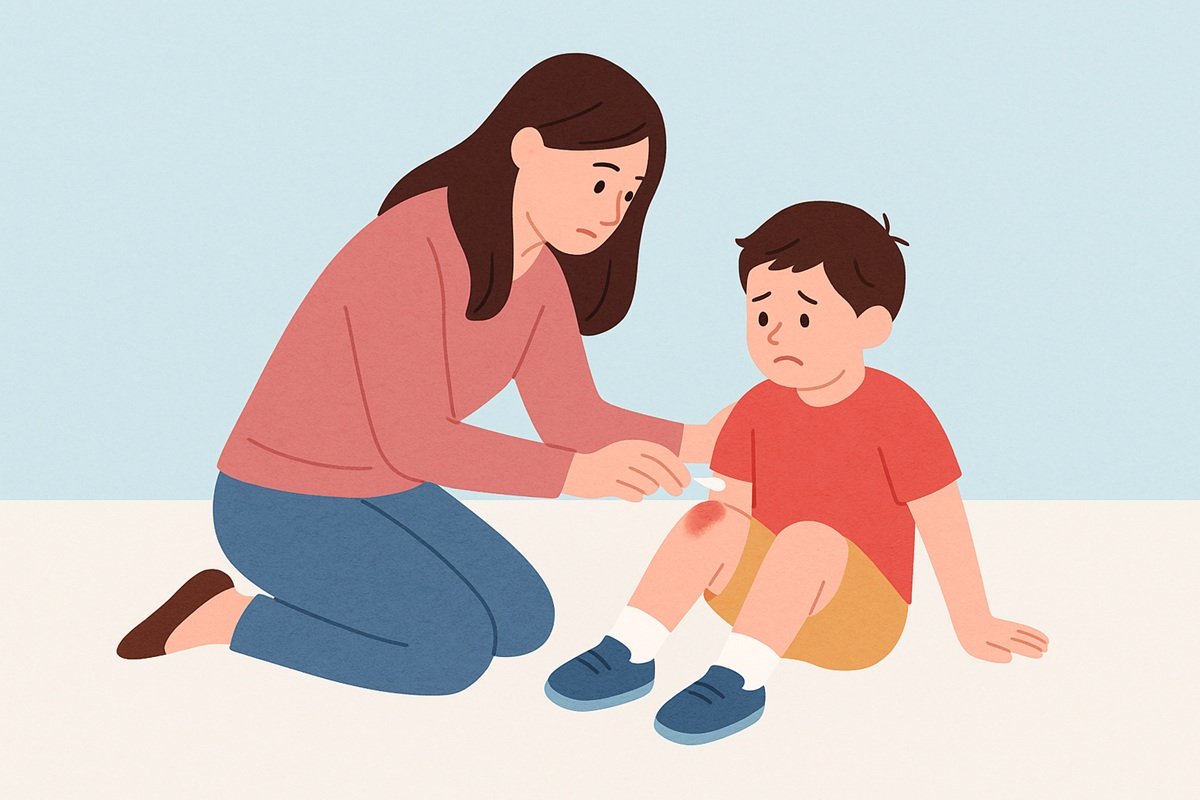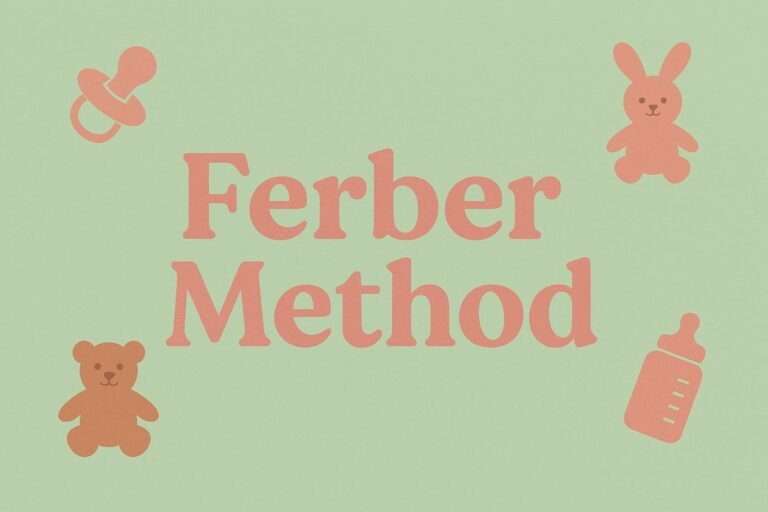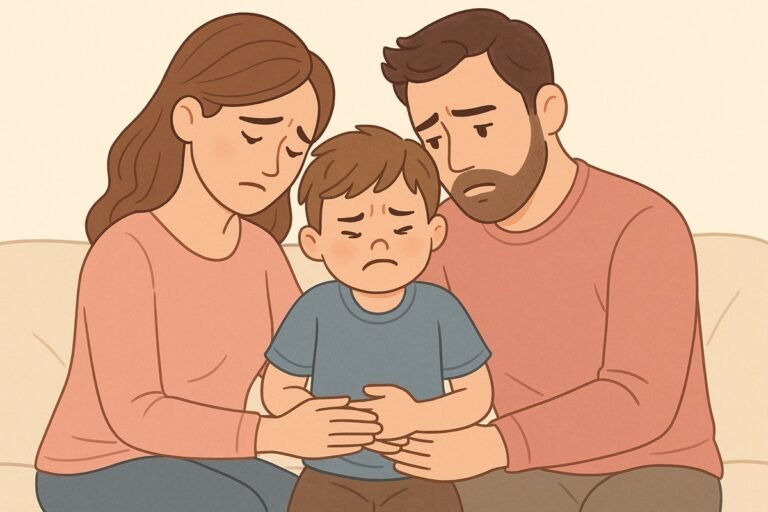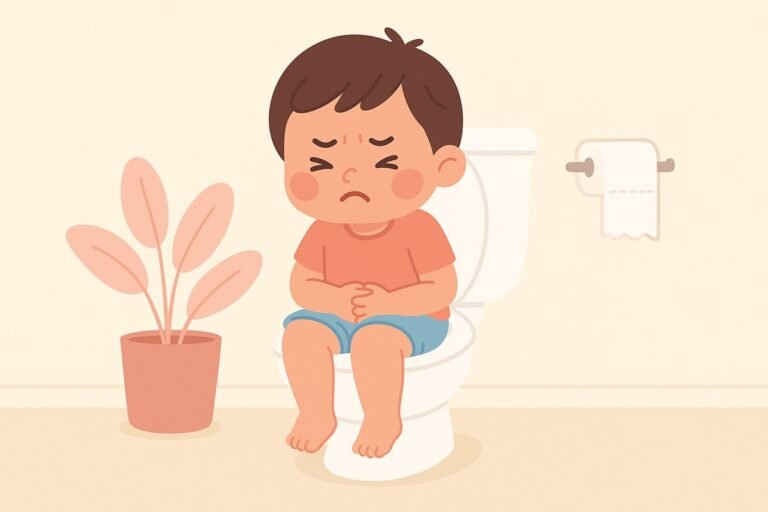Disclaimer: This article reflects the opinion and professional experience of the author, a licensed medical doctor. It is not a substitute for personal medical consultation. Any diagnosis, medical management, or use of medication should be supervised by a qualified healthcare professional.
Table of Contents
Child First Aid Basics
For us – parents – ensuring the safety and well-being of our children is crucial. When caring for a child, emergencies can occur unexpectedly, and being prepared with basic first aid knowledge can make a significant difference in outcomes.
This guide aims to equip parents with essential first aid training, outline the components of a comprehensive home first aid kit, and provide detailed instructions on handling critical situations such as choking, anaphylaxis, falls, and drowning in children.
Basic First Aid Training for Parents
Understanding and applying basic first aid for children can be lifesaving.
Parents should consider enrolling in certified courses that cover:
- Cardiopulmonary Resuscitation (CPR): Techniques for infants, children, and adults.
- Choking Relief: Methods to dislodge airway obstructions.
- Wound Care: Proper cleaning and dressing of cuts and abrasions.
- Burn Treatment: Immediate care for thermal injuries.
- Fracture Management: Immobilization techniques for suspected broken bones.
Recommended Training Resources on First Aid for Parents:
- American Red Cross: CPR and First Aid Training for Parents
- American Heart Association: Family & Friends® CPR Course
These organizations offer both in-person and online courses tailored for parents and caregivers.
Comprehensive Home First Aid Kit for Children
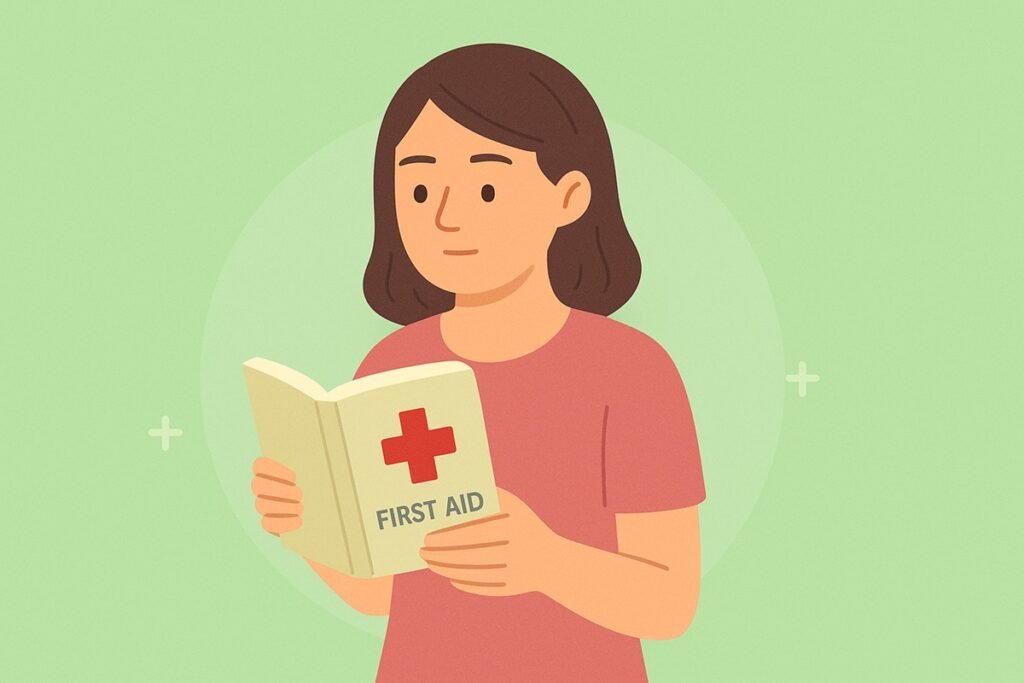
A well-stocked first aid kit is essential for addressing minor injuries and stabilizing more serious conditions until professional help arrives.
The American Red Cross recommends the following items for a family of four:
- Dressings and Bandages:
- 2 absorbent compress dressings (5 x 9 inches)
- 25 adhesive bandages (assorted sizes)
- 1 adhesive cloth tape (10 yards x 1 inch)
- 5 antibiotic ointment packets
- 5 antiseptic wipe packets
- 1 emergency blanket
- 1 breathing barrier with one-way valve
- Tools and Supplies:
- 1 instant cold compress
- 2 pairs of nonlatex gloves
- Scissors
- Tweezers
- Thermometer
- Flashlight with extra batteries
- First aid instruction booklet
Where to Purchase First Aid Kit Supplies for Children:
Regularly check and replenish your kit to ensure all items are within their expiration dates and in good condition.
Handling Choking in Children
Choking is a common emergency in children, especially those under the age of five. Prompt action is crucial, so this is one of the must-have topics to include in first aid for parents.
Signs of Choking:
- Inability to speak or cry
- Difficulty breathing or noisy breathing
- Coughing weakly or not at all
- Skin, lips, and nails turning blue
First Aid Steps:
- Encourage Coughing: If the child is coughing forcefully, allow them to continue.
- Back Blows:
- For children over one year:
- Stand or kneel behind the child.
- Deliver five firm back blows between the shoulder blades using the heel of your hand.
- For infants under one year:
- Lay the infant face down on your forearm, supporting the head.
- Deliver five gentle back blows between the shoulder blades.
- For children over one year:
- Abdominal Thrusts (Heimlich Maneuver):
- For children over one year:
- Stand behind the child.
- Place a fist just above the navel and grasp it with your other hand.
- Perform quick, upward thrusts.
- For infants:
- After back blows, turn the infant face up.
- Use two fingers to deliver five chest thrusts on the breastbone.
- For children over one year:
- Repeat: Alternate between five back blows and five abdominal or chest thrusts until the object is expelled or the child becomes unresponsive.
- If Unresponsive:
- Call emergency services immediately.
- Begin CPR, starting with chest compressions.
Note: Avoid performing a blind finger sweep, as it may push the object further into the airway.
Further Reading on First Aid for Child Choking:
Managing Anaphylaxis in Children
Anaphylaxis is a severe allergic reaction that can be life-threatening, so that’s why it’s crucial to include the management of anaphylaxis in your first aid for parents. Common triggers include certain foods, insect stings, medications, and latex.
Anaphylaxis Symptoms:
- Difficulty breathing
- Swelling of the face, lips, or throat
- Rapid heartbeat
- Skin reactions such as hives
- Dizziness or fainting
First Aid Steps:
- Administer Epinephrine:
- Use an epinephrine auto-injector (e.g., EpiPen) immediately.
- Inject into the outer thigh, even through clothing if necessary.
- Call Emergency Services: Even if symptoms improve after the injection, medical evaluation is essential.
- Positioning:
- Lay the child flat on their back.
- If breathing is difficult, allow them to sit up slightly.
- Do not let them stand or walk.
- Monitor: Be prepared to administer a second dose of epinephrine if symptoms persist or recur after 5-15 minutes.
Further Reading on Anaphylaxis First Aid for Parents:
You may also find useful: Parents’ Guide to Food and Drug Allergies: A Physician’s Expert Insight.
Responding to Falls in Children
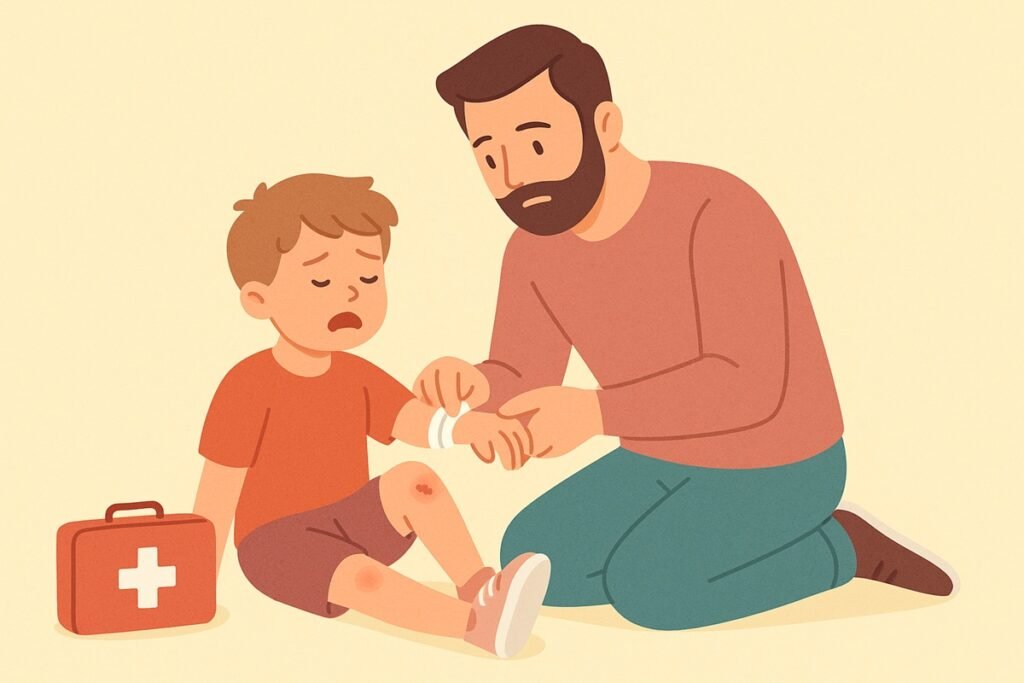
Children are prone to falls, which can range from minor to serious injuries.
Immediate Actions:
- Stay Calm: Your composure will help reassure your child.
- Assess the Situation:
- Check for responsiveness.
- Look for visible injuries, bleeding, or deformities.
- Control Bleeding:
- Apply gentle pressure with a clean cloth or bandage.
- Apply Cold Compress:
- Use an ice pack wrapped in a cloth to reduce swelling.
- Monitor for Serious Symptoms:
- Loss of consciousness
- Vomiting
- Seizures
- Unusual behavior or confusion
When to Seek Medical Attention:
- If the child falls from a significant height.
- If there is a suspected head injury.
- If the child exhibits any of the serious symptoms listed above.
Further Reading on Child Fall First Aid for Parents:
- HealthPartners: What to Do If Your Child Is Injured After a Fall
- DoveMed: First Aid for Fall Injuries in Children
Addressing Drowning Incidents
Drowning can occur quickly and silently, even in shallow water. Immediate intervention is critical.
First Aid Steps:
- Ensure Safety: Remove the child from the water without putting yourself at risk.
- Check Responsiveness and Breathing:
- If unresponsive and not breathing, begin CPR immediately.
- Perform CPR:
- For infants:
- Give five initial rescue breaths.
- Perform 30 chest compressions using two fingers.
- Alternate with two rescue breaths.
- For children:
- Give five initial rescue breaths.
- Perform 30 chest compressions using one or two hands.
- Alternate with two rescue breaths.
- For infants:
- Call Emergency Services: As soon as possible, or have someone else call while you continue CPR.
- Treat for Hypothermia: Once breathing is restored, keep the child warm with blankets.
Further Reading on Child Drowning First Aid for Parents:
Final Thoughts
Being prepared with first aid knowledge and supplies is an essential aspect of parenting. Regularly updating your skills through certified courses and maintaining a well-stocked first aid kit can empower you to handle emergencies effectively. Remember, while first aid can be lifesaving, it is not a substitute for professional medical care. Always seek medical attention following any significant injury or health concern.
Stay informed, stay prepared, and prioritize safety.

